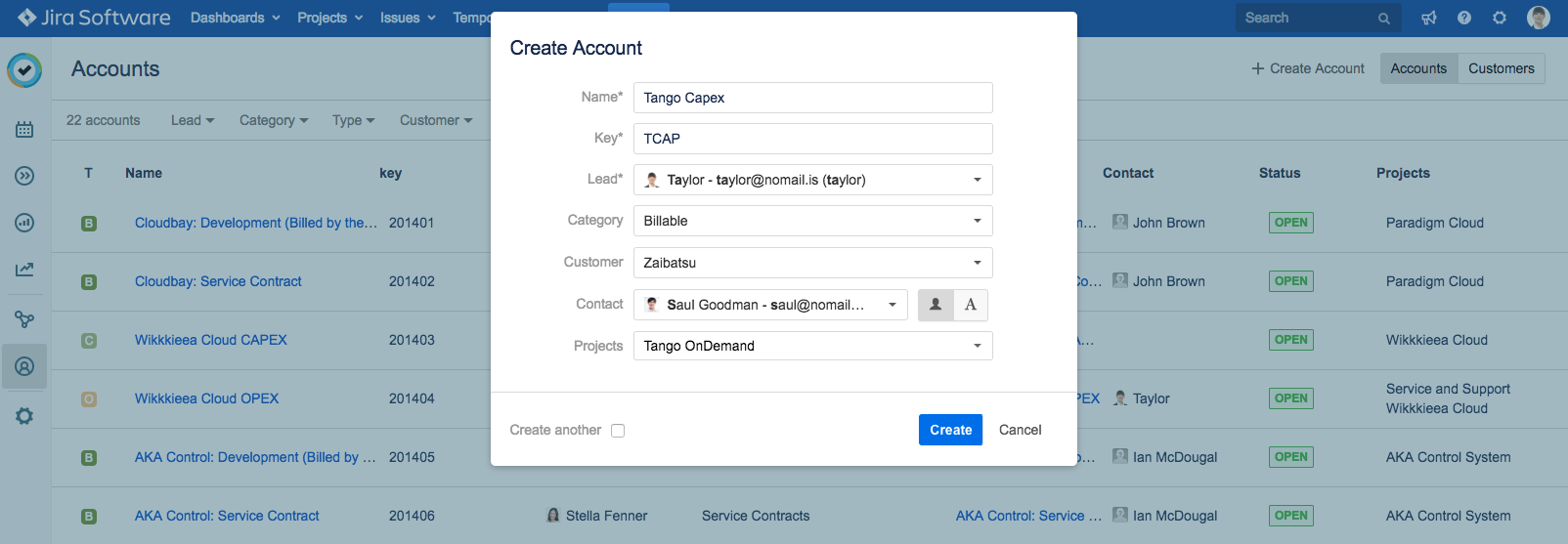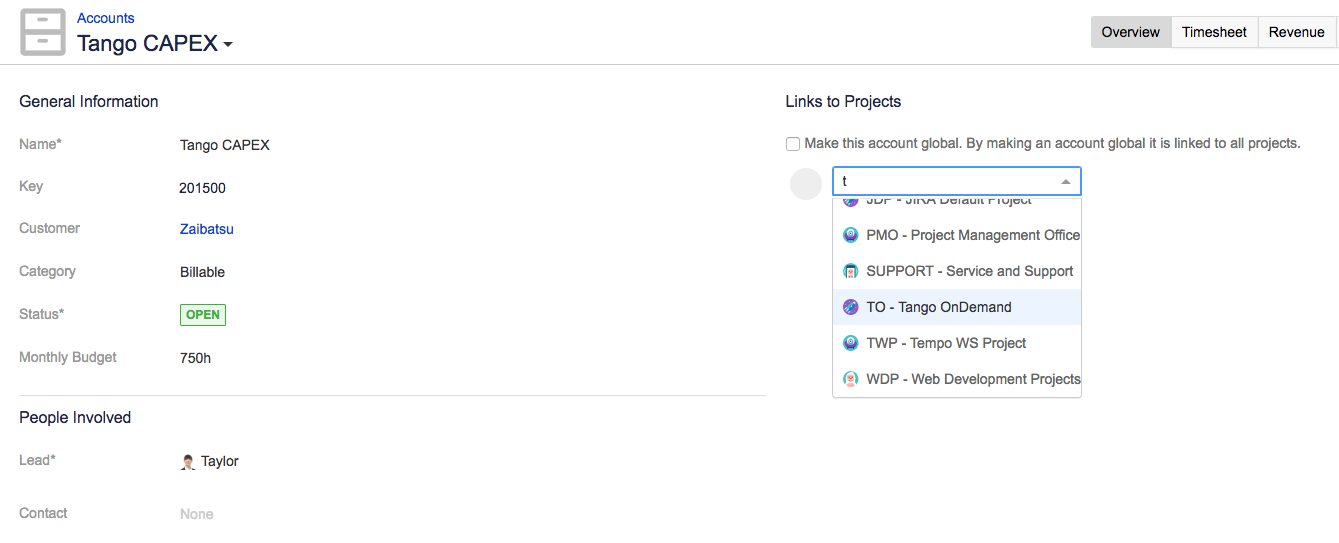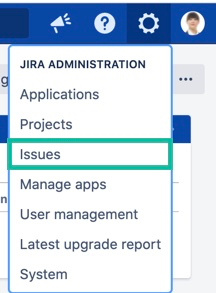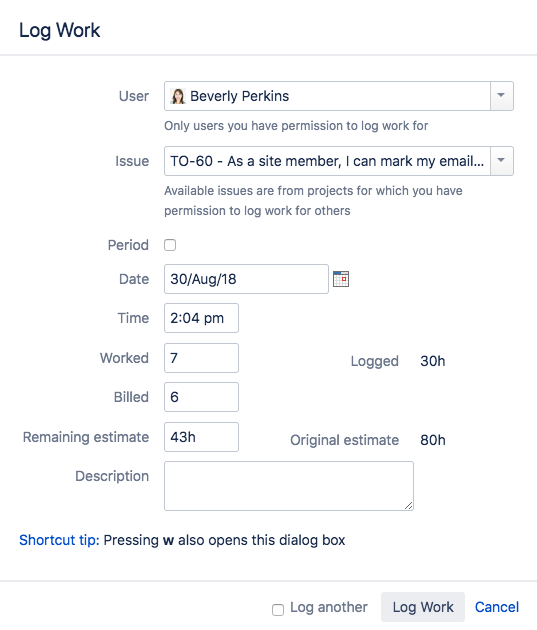In this tutorial, you will track time related to a customer, both billable and non-billable hours, to support invoicing. You will create a customer and accounts. Then you will link billable and non-billable issues to the accounts and log time to those issues. Finally, you will view all billable hours vs. the non-billable hours.
Make sure that the Account field is available on the Issue page and the Billable field is enabled in Global Tempo Configuration.
Step 1: Creating a new customer
The first step in tracking customer accounts is to create the customer. Create a new customer called Zaibatsu. Enter ZHI as the unique key for this customer.

Follow the steps in Creating and Deleting Customers to finish adding a new customer.
Step 2: Creating a new account
Now create a new account and connect it to your new customer. Name the account Tango Capex, assign it the key TCAP, and assign Taylor as the Team Lead. Select the customer and category you created.

Follow the steps in Creating and Editing Accounts to finish adding a new account.
Step 3: Linking the project to the account
With billable and non-billable accounts connected to your customer, you can now link the accounts to the Jira projects that you will be working in for this customer. Link both your Tango Capex and Tango Opex accounts to the Tango OnDemand project.

Follow the steps in Linking Accounts to Jira Projects to finish linking the project.
Step 4: Linking the accounts to Jira issues
Once the account is linked to the project, you must link the issues to the account. This is required if you want to generate reports using this information.
To add the Tempo Account custom field to the issue view:
-
Go to JIRA Administration and select Issues.

-
Select Custom Fields from the left side bar and the Account Team Custom field. will be at the top of the list of Custom fields.
-
Click the more menu and select Screens from the drop-down.
-
Choose the screen you would like to associate the field to (e.g. the Edit Issue screen).
-
Click Update to save.
After completing these steps, you can link the issue to the account.
For example, if you associated the field with the Edit or Default screen:
-
Go to the issue you want to link the account to.
-
Click Edit and in the edit screen scroll down to where the account field is.
-
Select the account you want to link to the issue.
-
Click Update in the bottom of the edit screen to save the changes.
Step 5: Logging work and specifying both worked and billable hours
Having set up your project and connected it to your customer's account, you are ready to log time to the project issues. Enter the the total hours in the Worked field and the number of billed hours in the Billed field.

Step 6: Viewing all billable versus non-billable hours
You can generate a custom report to view all hours spent on the customer's projects. Filter the report by customer. Display the report in a Grid View and select Billable under Columns. You can then compare the billable hours and the total hours logged to the customer. You can also export the data for invoicing.

Follow the steps in Viewing Reports to generate the report.
